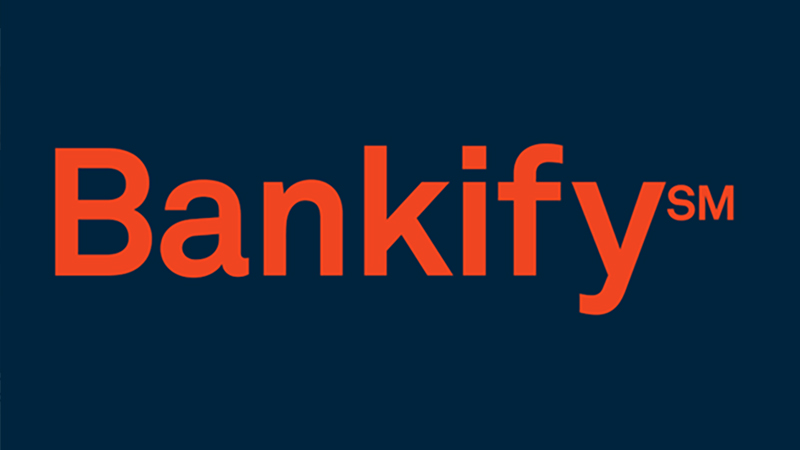This article was updated on July 10, 2025*
Sumner Francisco, Head of BankifySM at BNY, explores the growing trend towards open banking, and how the technology promises to modernize the consumer pay-by-bank journey and redefine how businesses get paid.
Open banking — a method of allowing consumers and businesses to securely share their financial data with third-party providers — continues to shape and disrupt the United States payment landscape. In the U.S., open banking has been evolving differently than in Europe. Rather than being driven by regulation — a hallmark of Europe’s open banking journey — it has developed somewhat organically in the U.S. through market-led initiatives. This dynamic is now beginning to shift.
Section 1033 of the Dodd-Frank Act, which focuses on transparency through consumer access to financial data, has been a hot topic in the open banking space. It’s the basis of a proposed rule by the Consumer Financial Protection Bureau that would require data aggregators/holders make consumer information securely available to third parties for services like financial planning or payment initiation.
While the proposed rule underscores the importance of secure, consumer-focused financial data sharing, it also ripens the environment for practical, value-driven use cases to thrive. One such use case is pay-by-bank, a disruptive new payment option that — by leveraging the open banking framework — gives users the ability to send and receive funds directly from a bank account. By disrupting incumbent payment methods, pay-by-bank has the potential to challenge the status quo in U.S. payments — but widespread adoption among merchants and consumers is key to its success.
The need for alternatives
Thanks to their convenience, reach and a lack of viable alternatives, merchant transactions in the U.S. have long been dominated by credit card and debit card payments. But the associated ease of use comes with a cost. Credit card and debit card payments in the U.S. often charge high interchange fees. Payment acceptance costs can frequently be one of the top expenses for companies, next to payroll. Merchants with tight profit margins feel this burden the most, so it’s not uncommon to see these merchants pass card fees to the customer, furthering the effects of inflation on consumers.
Through open banking, efforts are underway to offer merchants — and their customers — more choice. This too is being supported at a government level, with heightened regulatory scrutiny on the card networks. One emerging payment option is pay-by-bank, whereby consumers make direct payments from their bank accounts to the merchant’s account, circumventing the need for intermediaries, such as card networks or third-party payment providers.
For the consumer, the pay-by-bank option would sit beside other, more traditional payment methods on the online checkout screen or saved within a digital wallet. They navigate an interface that prompts them to log into their bank account, and by doing so, the end user is verified by the multifactor authentication most U.S. banks require for online banking. On the back end, the customer’s bank account information is retrieved, and an automated clearing house (ACH) payment instruction is prepared. The customer can then choose to directly authorize an ACH payment to a merchant. This unlocks ACH, a payment rail that has traditionally been used or predictable recurring transactions, and by consumers to facilitate person-to-person transfers between accounts.
Importantly, by using existing ACH payment rails in place of card networks, pay-by-bank offers merchants a cost-effective alternative to card payments. With the value-added capabilities that are enabled by open banking, like guaranteed settlement, doors open to new possibilities for ACH. In fact, this has the potential to bring a significant reduction of fees and costs typically associated with payment acceptance, which, in turn, will unlock savings for merchants and consumers alike.
Picking up the pay-by-bank pace
When it comes to the ubiquity and familiarity of card networks in the U.S., it should be noted that ACH is not the underdog it might initially appear to be. In fact, a recent Federal Deposit Insurance Corporation (FDIC) survey revealed that while 93% of Americans have access to an ACH-ready checking or savings account and 87% of Americans have a debit card, only 83% have a credit card.
This makes sense because the concept of pay-by-bank is certainly not new in the U.S. It’s widely used for recurring, predictable payments like utilities, telecom, insurance and subscriptions. It’s common for these types of companies to request that their customers manually input their payment account information — a process referred to as manual entry.
Recent innovation in open banking gives control to the consumer and eliminates tedious, and often error-laden, manual entry requirements. By choosing to pay-by-bank via open banking, the customer is in full control of a payment experience that is quick and seamless. For the merchant, the settlement of the payment can be guaranteed for ACH payments — reducing the risk of returns and chargebacks.
The world of retail payments is also improved for the customer with multiple use cases that address the innate settlement risk that comes with guaranteed ACH. Picture the scene: once the groceries are scanned, the customer can simply open the supermarket’s app and process their payment by scanning a QR code, either generated by the app or displayed at the terminal.
With these use cases in mind, pay by bank has the potential to redefine payment habits in both online and in-person scenarios — but what is needed to make this a reality?
Incentivizing consumers
The introduction of pay-by-bank into the U.S. payment landscape signals an exciting shift and has the potential to unlock significant benefits for merchants. While consumers stand to benefit from pay-by-bank, the onus is on merchants to convince their customers to change long-entrenched payment habits.
For digital natives, merchants will likely have to do less heavy lifting. According to a recent PYMNTS Intelligence report titled “What Consumers Need for Pay by Bank to Catch On,” 25% of Gen Z and 24% of millennials surveyed expressed an eagerness to use pay-by-bank, with an additional 23% and 22.5%, respectively, expressing interest in the option. In contrast, 67.9% of baby boomers expressed a lack of interest in adopting the method and will likely need more of a push to make the switch.1
So how can merchants foster greater acceptance of this payment method? One option is incentive programs, such as cash-back discounts or loyalty benefits. The same PYMNTS report found that 81% of consumers expressed at least some interest in pay by bank when informed of potential rewards.2
As merchants look to incentivize their customers, it is important to note that there is no one-size-fits-all approach. What might work for a subscription-based service may not have the same impact in the travel sector, as the needs and behaviors of customers in each industry differ significantly. Merchants looking to drive adoption must therefore focus on targeted incentive programs that align with their business and customer base.
[1] "Clearing Up Pay-by-Bank Confusion Requires Education and Incentives," PYMNTS, November 8, 2024, https://www.pymnts.com/news/payment-methods/2024/clearing-up-pay-by-bank-confusion-requires-education-incentives/
[2] "Clearing Up Pay-by-Bank Confusion Requires Education and Incentives," PYMNTS, November 8, 2024, https://www.pymnts.com/news/payment-methods/2024/clearing-up-pay-by-bank-confusion-requires-education-incentives/
This article was updated on July 10, 2025 to reflect a recent motion by the Consumer Financial Protection Bureau to vacate the Section 1033 rule of the Dodd-Frank Act.
BNY is the corporate brand of The Bank of New York Mellon Corporation and may be used to reference the corporation as a whole and/or its various subsidiaries generally. This material and any products and services mentioned may be issued or provided in various countries by duly authorized and regulated subsidiaries, affiliates, and joint ventures of BNY. This material does not constitute a recommendation by BNY of any kind. The information herein is not intended to provide tax, legal, investment, accounting, financial or other professional advice on any matter, and should not be used or relied upon as such. The views expressed within this material are those of the contributors and not necessarily those of BNY. BNY has not independently verified the information contained in this material and makes no representation as to the accuracy, completeness, timeliness, merchantability or fitness for a specific purpose of the information provided in this material. BNY assumes no direct or consequential liability for any errors in or reliance upon this material.
This material may not be reproduced or disseminated in any form without the express prior written permission of BNY. BNY will not be responsible for updating any information contained within this material and opinions and information contained herein are subject to change without notice. Trademarks, service marks, logos and other intellectual property marks belong to their respective owners.
© 2025 The Bank of New York Mellon. All rights reserved. Member FDIC.





